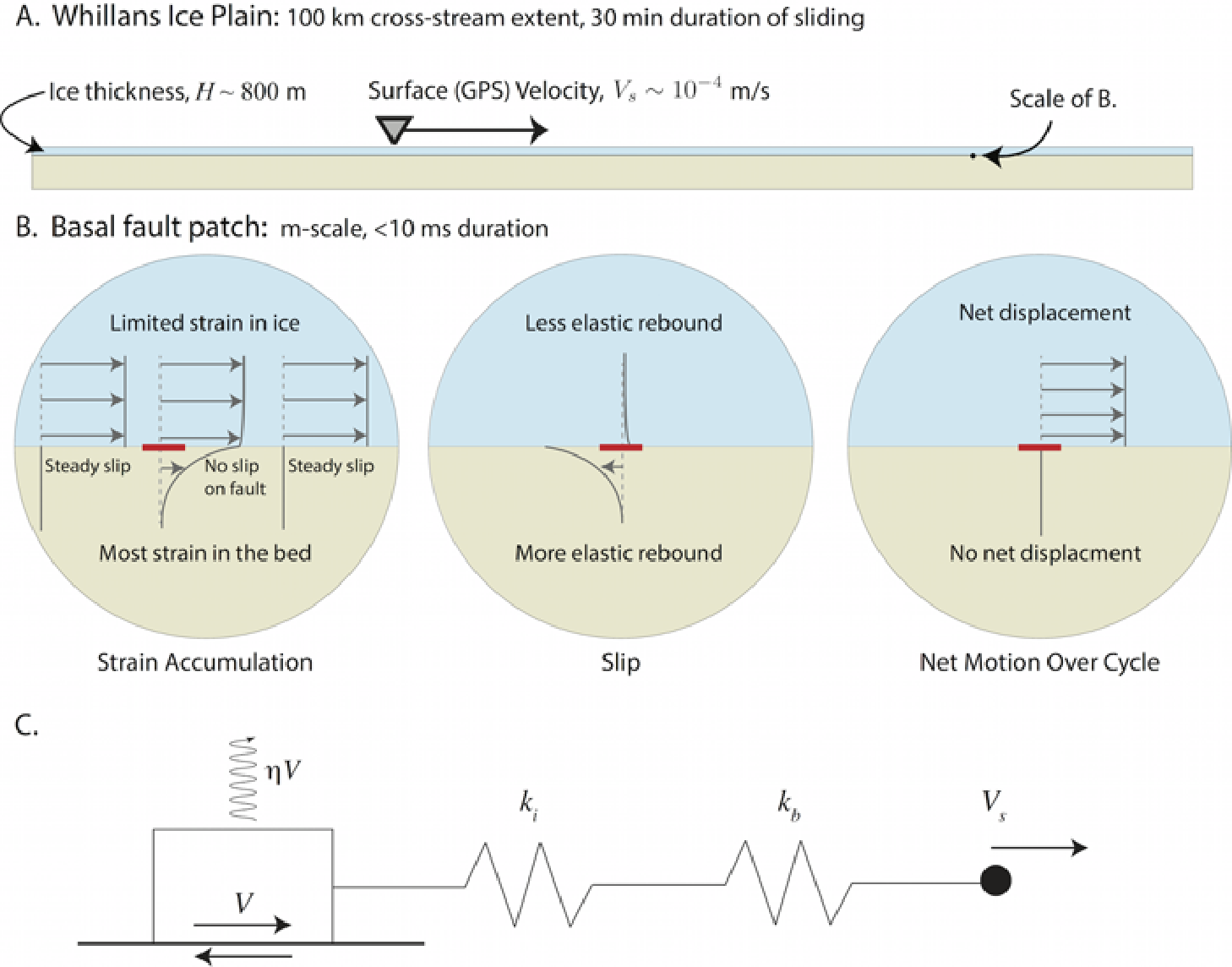
Concern about future sea level rise motivates a study of the subglacial conditions that give rise to fast flowing ice. Since most ice flux in Antarctica occurs through ice streams, understanding the conditions that cause ice stream acceleration and stagnation is of basic importance in understanding the continent's contribution to future sea level rise.
The Whillans Ice Plain (WIP) region of the West Antarctic Ice Sheet (WAIS) flows to the sea mostly by way of stick-slip motion at multiple scales (Fig. 1). Most notable is the 200 km-scale, tidally-modulated stick-slip motion of the entire WIP. Rupture during these events initiates near the grounding zone and then propagates away at a slow average rupture velocity (~200 m/s). Sliding accelerates to values as large as 65 m/d, with total slip per event of about 0.5 m, and the entire event lasts about 30 min. This is the equivalent of a magnitude 7 earthquake. The WIP is also is notable for decelerating from previously fast motion over the instrumental record. We are conducting numerical simulations to tease out the exact relationship between stick-slip motion and deceleration, and to place constraints on basal friction. Stick-slip motion requires a rate-weakening rheology over some portion of the bed, which we capture using rate-and-state friction constitutive laws. While such constitutive laws are a foundational component of our understanding of tectonic earthquakes, they are not commonly invoked to understand glacier sliding.
Additionally, during these large-scale sliding events, meter-scale patches at the bed of the WIP repeated rupture in small earthquakes to generate high frequency (up to about 20 Hz) seismic tremor. Motion during each small event occurs over a time scale of about 1/100 s and produces only 40 microns of slip per event. By modeling this tremor we can infer conditions at the glacier bed.

|
| Fig. 1: Schematic of the Whillans Ice Plain (WIP) and associated seismicity. (a) The entire WIP slides forward in the equivalent of magnitude 7 earthquakes occuring about once or twice each day. (b) During these large-scale slip events, seismic tremor is observed, and attributed to rapidly repeating stick-slip events on meter-scale patches of the bed. (c) Schematic of the idealized spring-slider system we used to model the seismic tremor and infer properties of the bed. |